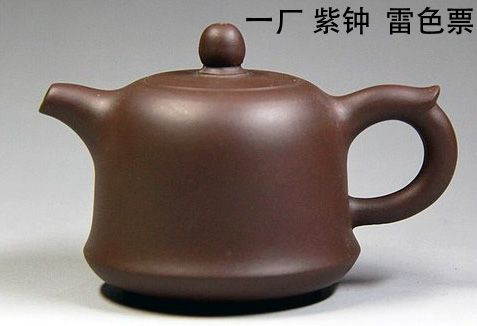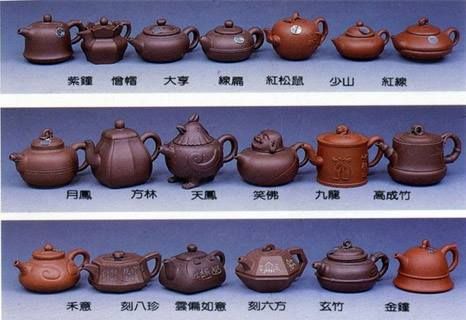Hey all, a friend of the family got this teapot and had no use for it, so she gave it to me along with some other items. She acquired it from her aunt who is in her nineties now. I'd just like help determining if it's worth keeping and I'd like to know what the stamps say. I'm not expecting it to be very good at all, I'm just curious. There also appears to be black staining inside to pot, I think this might be dried out mould. It leaves a gritty substance on my fingers when I rub it off. I plan on soaking the pot in a bleach solution and boiling it a few more times (if it isn't junk). It is pretty damn beat up and has a lot of tea staining.
Do you think it'll be safe to use after I clean it out?
Help with a teapot.
- Attachments
-
- This brown residue rubbed off of the inside of the lid.
- securedownload-4.jpeg (40.55 KiB) Viewed 1370 times
-
- securedownload-2.jpeg (40.53 KiB) Viewed 1370 times
-
- securedownload.jpeg (36.34 KiB) Viewed 1370 times
Last edited by Baci15 on Aug 2nd, '14, 22:48, edited 1 time in total.
Re: Help with a teapot.
more pics-
- Attachments
-
- securedownload-7.jpeg (44.28 KiB) Viewed 1369 times
-
- securedownload-6.jpeg (45.09 KiB) Viewed 1369 times
Re: Help with a teapot.
It certainly was very well used. If the aunt lived into her 90's after using it so much, I see no reason why you couldn't keep using it! 
Sounds like you got your cleaning plan all worked out. Give it a shot and put it back in service if you can get rid of the black stuff. I've seen tea stains that dark, but without inspecting it in person, I'd urge you to be on the safe side.
Sounds like you got your cleaning plan all worked out. Give it a shot and put it back in service if you can get rid of the black stuff. I've seen tea stains that dark, but without inspecting it in person, I'd urge you to be on the safe side.
Re: Help with a teapot.
Alright, thanks!
After further inspection I do think that the black staining is mould. The inside of the pot has a very weird hard to place smell that I've noticed with another pot that grew some mould. I'm leaving a baking soda paste in the pot to soak and I'll scrub it some more after it's sat for a few hours at least. I managed to get some of the stuff off earlier but there is some very very deep staining in other areas and in the spout.
The clay actually looks kind of decent to my untrained eye ('ll try to get some closeup pictures posted later). I'm not getting my hopes up about this pot, but the person who had it before me obviously took it very seriously and used it a lot, so I'm hoping it may be ok.
Also, do you have any idea what the chop stamp might say? Is it just a generic "China yixing" stamp?
After further inspection I do think that the black staining is mould. The inside of the pot has a very weird hard to place smell that I've noticed with another pot that grew some mould. I'm leaving a baking soda paste in the pot to soak and I'll scrub it some more after it's sat for a few hours at least. I managed to get some of the stuff off earlier but there is some very very deep staining in other areas and in the spout.
The clay actually looks kind of decent to my untrained eye ('ll try to get some closeup pictures posted later). I'm not getting my hopes up about this pot, but the person who had it before me obviously took it very seriously and used it a lot, so I'm hoping it may be ok.
Also, do you have any idea what the chop stamp might say? Is it just a generic "China yixing" stamp?
Re: Help with a teapot.
In that case, if it's mold, I would try hitting it with bleach, denture cleaners, baking soda, boiling, etc. However, if it didn't clean up perfectly, I'd just use it as a decoration. It's not a nice enough pot to risk your health over.
Re: Help with a teapot.
I got pretty much all the mould out. I let it soak in a water/baking soda solution for a few hours and just scrubbed. There are still some stains but they are not black and simply look like tea stains. I then cleaned the spout out and passed boiling water through it until there was no more particulate coming out in the water. After rinsing thoroughly I put boiling water through and tried it. I tasted no off tastes, but noticed that the pot thickened the water a bit and left a tiny bit of sweetness on the tip of the tongue. It no longer smelt of mould.
I tried brewing some charcoal roasted dong ding in it and it was wonderful. It rounded out the roasting nicely, but didn't take away too much. In fact, it left more roasty toasty flavours that my low (almost underfired) hongni did. Also, it seems there was so much mould in the spout that it slowed down pour time! It went from 15 sec. (pre-clean) to 12-13 sec.
All in all, I'm pretty happy with it and I'm glad I could get rid of the mould. I may post it in the yixing showoff thread to get some more info/translations of the stamps.
Post clean: http://imgur.com/a/hN0Yu (sorry for terrible photos)
I tried brewing some charcoal roasted dong ding in it and it was wonderful. It rounded out the roasting nicely, but didn't take away too much. In fact, it left more roasty toasty flavours that my low (almost underfired) hongni did. Also, it seems there was so much mould in the spout that it slowed down pour time! It went from 15 sec. (pre-clean) to 12-13 sec.
All in all, I'm pretty happy with it and I'm glad I could get rid of the mould. I may post it in the yixing showoff thread to get some more info/translations of the stamps.
Post clean: http://imgur.com/a/hN0Yu (sorry for terrible photos)
Re: Help with a teapot.
Thank you. I'm probably going to end up using it with roasted dong ding. I'll try to get a closeup picture of the clay posted tomorrow, I'm very curious about it. Zi ni perhaps?
My mother knows somebody through work who is very knowledgable about tea and who actually grows it somewhere in china (can't remember the exact location.) He may be able to translate the stamps so we've sent some pictures to him.
My mother knows somebody through work who is very knowledgable about tea and who actually grows it somewhere in china (can't remember the exact location.) He may be able to translate the stamps so we've sent some pictures to him.
Re: Help with a teapot.
looks ok.
Factory 1 "bell shape" pot mold. (钟式)
probably 90s, cant tell from your white balance but should be jia-zi
you probably should seek someone knowledgeable on F1 stuff for more comments.
Factory 1 "bell shape" pot mold. (钟式)
probably 90s, cant tell from your white balance but should be jia-zi
you probably should seek someone knowledgeable on F1 stuff for more comments.
Re: Help with a teapot.
Thanks. I thought it might've been factory 1.
quick edit: What is jia-zi? Is this referring to clay? Sorry to sound ignorant .
.
Here's some closeups of the clay:
quick edit: What is jia-zi? Is this referring to clay? Sorry to sound ignorant
Here's some closeups of the clay:
- Attachments
-
- DSCN0172.jpg (39.3 KiB) Viewed 1134 times
-
- DSCN0167.jpg (45.43 KiB) Viewed 1134 times
-
- DSCN0167_2.jpg (32.14 KiB) Viewed 1134 times
Re: Help with a teapot.
yeap is f1 shape. but factory is not as important as clay type/quality. clay looks good, but better let the clay experts to make their comments and explain the clay typeBaci15 wrote:Thanks. I thought it might've been factory 1.
quick edit: What is jia-zi? Is this referring to clay? Sorry to sound ignorant.
Here's some closeups of the clay:
Re: Help with a teapot.
90s factory-1 pots are high-fired (temp around 1150~1180c). 24~48-hrs continuous firing by the heavy oil.
Traits are every pot received the similar temperature (due to the shape of the kiln) and fired products left 'oily' trait throughout.
The clay used was dominantly manganese-doped Pin Zi Ni (60-hole seive), seldomly, Qing Shui Ni
that's all I heard...peace.
Traits are every pot received the similar temperature (due to the shape of the kiln) and fired products left 'oily' trait throughout.
The clay used was dominantly manganese-doped Pin Zi Ni (60-hole seive), seldomly, Qing Shui Ni
that's all I heard...peace.

